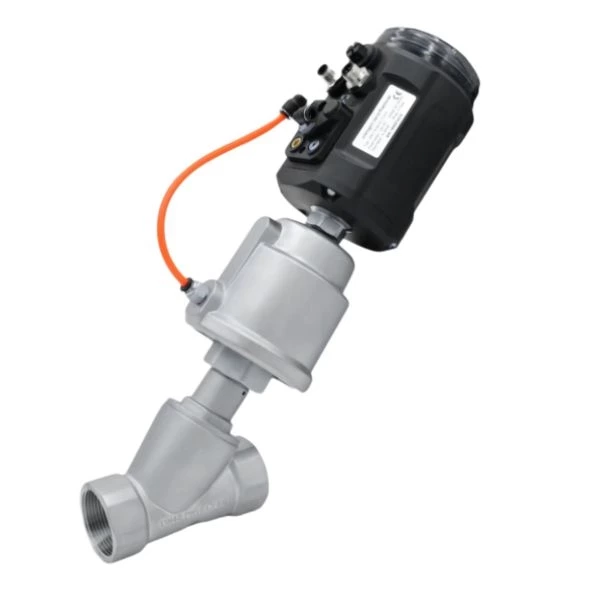Main Structure And Working Principle Of Pneumatic Angle Seat Valve
Angle Seat Valve is a fluid control valve that uses compressed air as a power source to drive the valve core to open and close through a pneumatic actuator. Pneumatic angle seat valves are widely used in fluid control systems in the chemical, pharmaceutical, food, environmental protection, water treatment and other industries to adjust and control the flow, pressure and direction of the fluid. At the same time, they are also widely used in industrial automation systems, such as material transportation and waste gas treatment on production lines.
Main structure of pneumatic angle seat valve:
1. Valve body: The valve body is made of high-quality casting materials, with compact structure, corrosion resistance and high strength. The inner cavity of the valve body is streamlined to reduce fluid resistance and improve flow capacity.
2. Valve core: The valve core is made of wear-resistant and corrosion-resistant materials to ensure long-term stable operation. A soft sealing structure is used between the valve core and the valve seat, with good sealing performance and no leakage.
3. Pneumatic actuator: The pneumatic actuator consists of a cylinder, a piston spring and other components. The piston movement is driven by compressed air to realize the opening and closing of the valve core. An adjusting bolt is provided on the outside of the cylinder to facilitate the adjustment of the action speed of the pneumatic actuator.
4. Positioner: The positioner is used to indicate the switch position of the valve core, which is convenient for operation and maintenance.
5. Connection flange: The connection flange meets international standards and is convenient for connection with other pipelines and equipment.
Working principle of pneumatic angle seat valve
When compressed air enters the cylinder of the pneumatic actuator, it pushes the piston to move, thereby driving the valve core to move. When the compressed air acts on one end of the piston, the valve core is closed: when the compressed air acts on the other end of the piston, the valve core is opened. By changing the flow direction of the compressed air, the switch control of the valve can be achieved.
